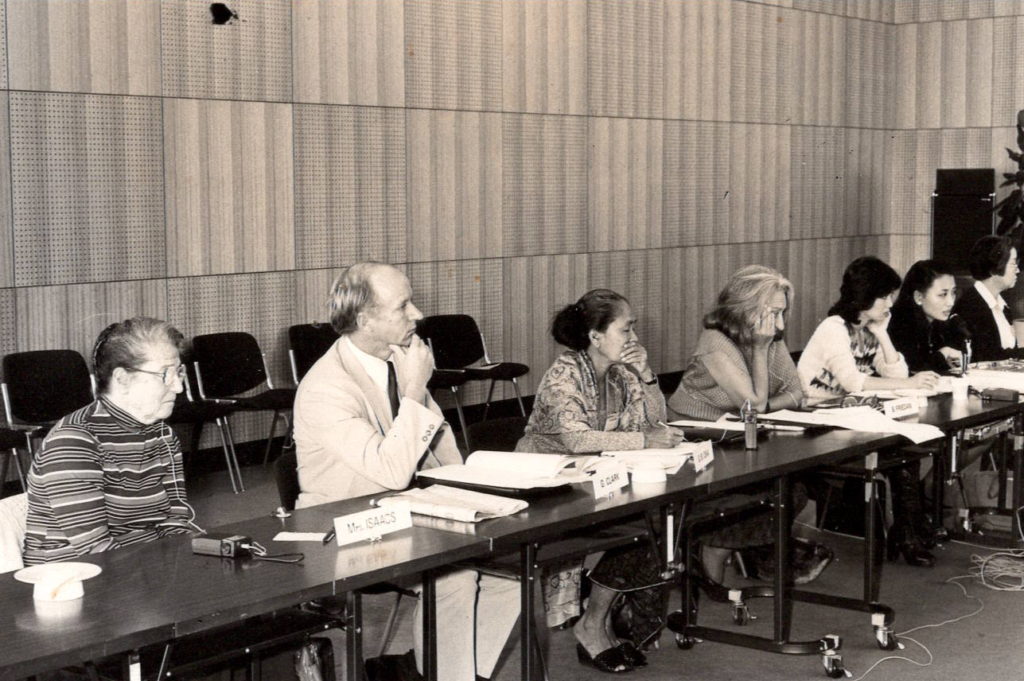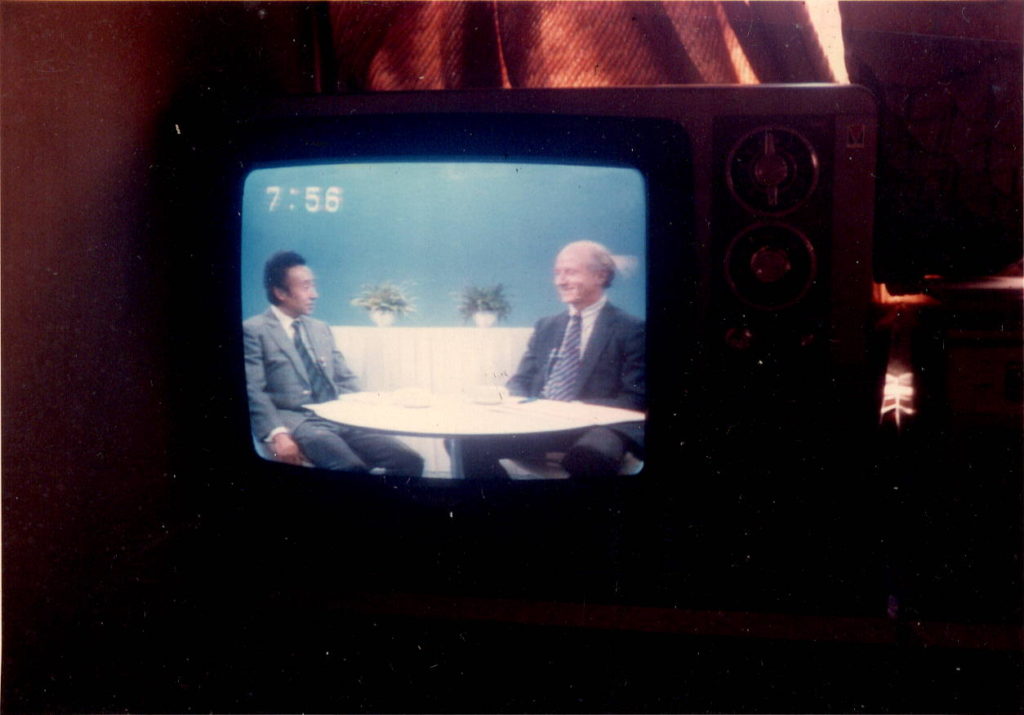Chapter 64 – My Media Disasters
BETWEEN FOUR WORLDS: CHINA, RUSSIA, JAPAN AND AUSTRALIA.
BETWEEN FOUR CAREERS and FOUR LANGUAGES.
Dogged by a word: ‘Reform’
1. Economic Reform Dogmas
2. Nikkei’s ‘Structural Reform’ Hangup
3. Retaliation via Voice
4. Foreign Advice also Rejected
5. Asahi and Others Too
6. TV, NHK too
7. Western Media Too
Throughout the seventies and well into the eighties I had enjoyed good access to Japanese media.
But with media eventually you will hit roadblocks and mine was to be a bad one.
1. Economic Reform Dogmas
After Bubble collapse it was clear that the government should be doing more spending, to overcome the fall in domestic demand.
Instead it had become dogma that the government should cut spending.
Austerity was the order of the day. The media – Nikkei especially – were heavily influenced by the supply-side economic theories coming out of the US.
This said cuts in government spending combined with reforms (privatisation, liberalisation etc) would rescue economies in trouble.…
But supply side theories, if they made any sense at all, only made sense in economies suffering excessive demand and inadequate supply.
Japan’s problem was precisely the opposite – excessive supply and inadequate demand.
The highly predictable result was a strong downward shock to an economy still recovering from Bubble excesses, and many fine companies dragged down with it.
In my Boso countryside I could see the damage well and close-up.
Company A would collapse with debts, causing its partner company B to collapse which would then imperil C, D and E – a typical chain reaction.
2. Nikkei’s Structural Reform Hangup
Nikkei (Nihon Keizai Shimbun) ran a regular page called keizai kyoshitsu (economic classroom) where economists and commentators had the best part of half a page to sound off on their various ideas and theories.
I had run one or two articles there before. Why not again, on what I saw as the crucial problem on inadequate demand, I thought?
As well, I had some good economic data (something the page liked) to back me up in explaining Japan’s problems.
In particular I had noted the close reverse connection between household savings rates and economic progress in the main advanced economies.
The iconoclastic conclusion was that high household savings levels were harmful to progress.
They were harmful because they reflected low consumption desires and therefore low aggregate demand – a dangerous situation in advanced economies where supply was usually strong.
Cuts in government consumption would do even more harm.
In short, the Japanese government had to get hold of some of those excessive savings and spend them, or at least find some other way to push them back into the economy.
Combined with my would-be sociological explanation for why savings were so high (or rather, why consumption was so low) in Japan – an explanation flattering to Japan and critical of us Westerners – it made for a neat piece in an economic newspaper. Or so I thought.…
But Nikkei rejected the piece outright, and rudely.
When I asked why I was given some mealy-mouthed talk about how it conflicted with a series it was running on the same page (which only lasted a week and had zero impact).
The far more likely explanation was much more distressing – Nikkei’s strong move to the Right, and not just in politics.
Its editorials were demanding stringent fiscal policies. They were showing open contempt for Keynesian approaches.
One of their editorial writers had even condemned Keynesianism as ‘anachronistic’ (jidai okure).
Even the supposedly academically neutral pages of keizai kyoshitsu had been contaminated, it seemed, by the new austerity ideology.
And this was the newspaper that I had always known as the sensible voice of both political and economic moderation. (note 1
I was disappointed, and angry.

3. Retaliation via Voice
What to do?
The fairly low-brow, rightwing magazine ‘Voice’ had asked me to write for them at various times.
I approached them and they agreed readily to run the gist of my rejected Nikkei piece.
But I also decided, perhaps foolishly, to include in the article a criticism of the Nikkei swing to conservative bias that I saw as having led to rejection of the original article.
I felt it was important for readers to realise the biases that were doing such harm to the economy.
And so I was published.
…
The Nikkei people exploded in anger, particularly after my Voice article was picked up favourably by other media.
Nikkei sent one of their top editorial people to my office to complain.
They also sent me an official protest in writing – something very unusual for any newspaper to do.
I was put firmly on Nikkei blacklist. Invitations for interviews and comments ceased abruptly.
Even the regular annual invitation to their year-end economist’s reception was stopped.
I should have realised that Nikkei would react as it did. My only excuse was that I really was angry that Japan’s economic future could be destroyed so casually.
But I was fighting the impossible. Nikkei had made up its conservative mind and was not going to change just for me.
4. Foreign Advice also Rejected
It was not just my little self who was being ignored.
Strong advice to reflate the economy from some top US economists, including two Nobel Prize winners – Lawrence Klein and Joseph Stiglitz (who came to Japan to give the advice) was also being ignored.
Nikkei normally welcomed the words of top Western economists.
But the rightwing dogma of austerity, and then even more austerity, had taken over completely.
To this day Nikkei has not admitted it was wrong, let alone apologised, for the dreadful harm it did to the economy – the 20 year recession, or the lost two decades as it came to be known.
5. Asahi and Others Too
I am also certain I lost a good relation with Asahi Television due to my views on the economy.
On both their Sunday AM and Friday all-night programs I had tried hard to argue that government spending on public works could actually be good for the economy.
But for Asahi, cuts to public works were the only way to end the public works corruption that had funded the Right which had done so much harm to Asahi over the years.
Using public works corruption as the reason for denying the public works needed for the economy was a classic case of throwing out the baby with the bathwater.
6. TV, NHK too
After the fight with the parent company Nikkei’s TV Channel 12 dropped me with even greater speed.
Its late-night business program compered by a friend, Maoko Kotani, had become infatuated with Koizumi-era ‘structural reform’ slogans.
Even my long-standing relation with NHK national radio began to fade, and for much the same reason.
I realised that for many the very words – ‘structural reform’— implied progress.
To criticise ’structural reform’ implied stuck-in-the-mud obscurantism.
…
I tried to point out how in Japanese there was an important distinction betwee two words —kaizen and kaiaku— with the the former meaning change for the better and the latter meaning change for the worse.
Much of what passed for ‘reform’ was in fact kaiaku, I wrote, proud of my mastery of the language.
But to no avail. The ‘structural reform’ illusion was to last for two decades.
It locked Japan into a perpetual cycle of weak demand, inadequate tax revenues, increased government debt, encouraging further cuts in government spending, causing more weak demand….
(There should be a ban on people being allowed to tack the word ‘reform’ onto any hare-brained scheme they are promoting….)
Eventually a few people were to begin to say that maybe more government spending on things like public works was a good idea. But by that time the damage had been done.

7. Western Media too
Many Western media, Financial Times predictably, were to be equally misled by the ’structural reform’ slogan.
And their mistaken austerity views did much to reinforce the mistaken austerity views in Japan.
The advanced economies had become one big echo chamber reciting the mantras of austerity and economic stagnation.
The Economist too had become boringly insistent in its demands that Japan continue to follow supply-side, structural reform policies. Its persistent praise for the wretched Koizumi was sickening.
Koizumi’s populist claims that he, and only he and his ‘structural reforms,’ could rescue Japan from its economic and public debt problems had in fact led Japan to dangerous deflation and a 200 trillion yen increase in public debt.
And yet the world, including The Economist, saw this wretched excuse for a political leader as the great reformer.(Koizumi knew little about economics. He handed everything over to the immature and heavily US-influenced Keio University economist, Takenaka Heizo.
(I knew quite a bit about Takenaka. At the height of the 1980’s Dotcom boom I had shared a platform with him in Nagoya where he waxed exultant about how that obviously soon-to-burst Dotcom boom would push the Japanese economy to even greater heights.
(Later he was to suggest he could avoid personal taxes by making sure he was in the New York at the end of each financial year.)
The Financial Times, equally attentive to the Japanese economy and equally rightwing, rejected without even the courtesy of a reply, a careful piece I gave them at the suggestion of their Tokyo office, in which I concentrated on the lack of domestic demand problem.
Meanwhile the Nikkei editorials were to continue even more stridently to demand fiscal stringency and anti-Keynesian policies, even when it was clear that the Koizumi/Takenaka policies were going nowhere.
…
It all reminded me of the hardline communists I had known in Moscow.
If communism was failing to deliver that was not because of failings in the doctrine. Rather it was because the doctrine was not being implemented fully enough.…
Economic science is not a Japanese strong point.*
But come to think of it, the foreigners who were also misled by the ’structural reform’ slogan were not very clever either.
* Later I was to discover a strange anomaly in Japan’s economic history. Postwar academic economists had been heavily Marxist. For them, Keynesian economics had been seen as a rightwing deviation.
Only much later, in the eighties and nineties did Keynesian economics come to be seen as leftwing.
But today it is in the extreme rightwing publications that one finds the best analyses of the need for the Keynesian approach.